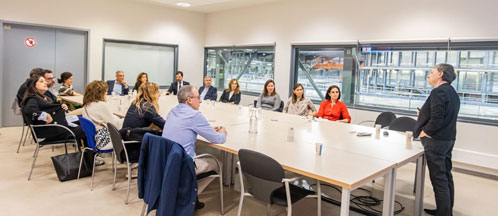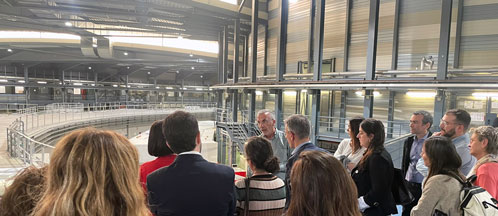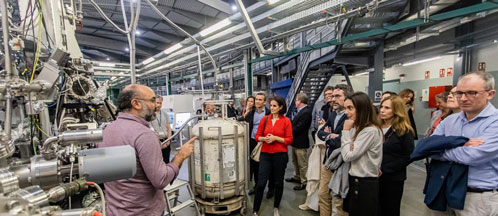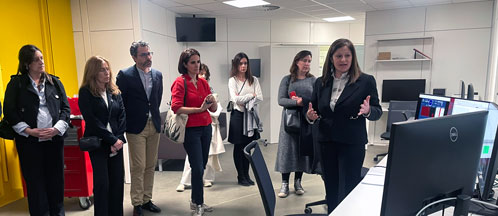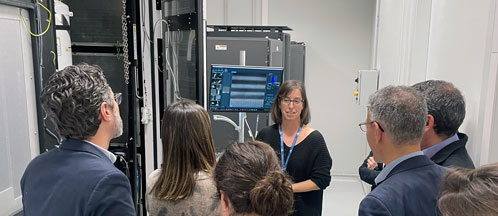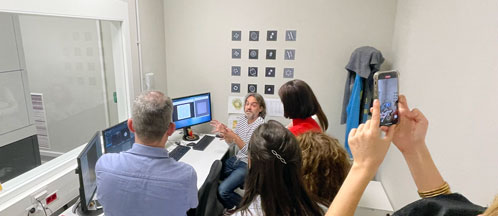Do you want to keep up to date? Subscribe to our newsletter. 1 mail every 2 months! |
 |
Cerdanyola del Vallès (Barcelona), 19th March 2024. Twenty people from the European Commission, the Government of Spain and the Generalitat of Catalonia had the opportunity to visit some of the co-funded projects, such as the LOREA and FAXTOR beamlines or the JEMCA joint electron microscopy centre.
The visit began with a presentation by Caterina Biscari, director of the ALBA Synchrotron, in which she described the current situation of the facility as well as her future plans with the ALBA II upgrade. During her intervention, she highlighted that "the investment of ERDF funds has been essential to increase the number of scientific instruments at the ALBA Synchrotron, as well as to guarantee their correct operation."
After that, the entire delegation moved to the experimental area, where they were able to learn about the project to improve the reliability of the radio frequency transmitters of the ALBA accelerator system. Francis Pérez, head of the Accelerators division, described how the system has optimized the performance of the accelerators, whose reliability exceeds 98%.
They subsequently visited the LOREA beamline, in operation since 2021, where Massimo Tallarida, scientist in charge, explained how it is key for the study of advanced materials, such as graphene, high-temperature superconductors or topological insulators.
They could also visit the FAXTOR beamline, now in commissioning and receiving the first users at the end of this year 2024. Alessandra Patera, scientist responsible for FAXTOR, has described how this X-ray tomography beamline will cover a wide range of applications in the fields of life sciences, materials science, geology, food, cultural heritage or palaeontology.
The last stop was to see the JEMCA joint electron microscopy centre, the result of collaboration between different research entities. Currently, the centre hosts two microscopes: the EM01-Cryo-TEM, coordinated by the Institute of Molecular Biology of Barcelona (IBMB-CSIC) for life sciences, and the EM02-METCAM, coordinated by the Catalan Institute of Nanoscience and Nanotechnology (ICN2) for materials sciences. Pablo Guerra (IBMB-CSIC) and Belén Ballesteros (ICN2) showed both instruments to the delegation and detailed some examples of application.
